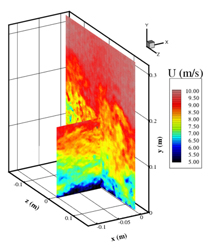Enhanced turbulent air flow models for aircraft design
Aerodynamics, or the properties of air in motion and particularly of bodies moving through air, forms the basis of flight. Aircraft wings are designed to exploit airflow over their surfaces in such a way as to produce lift and, of course, to enable steering of the aeroplane. Understanding the complex physics at the interface or boundary of the wing and air is critical to aircraft design and development. Although it might seem that the physics have been worked out since the time of the Wright brothers, scientists recently showed that the explanation of wing lift that dominated the field for over a hundred years is actually false. Europe is determined to reduce the cost associated with aircraft design, development and operation. Understanding complex flow physics without costly and time-consuming experiments has become increasingly important, highlighting the need for sophisticated modelling software and tools. Laminar flow is determined by wing geometry and is relatively easy to model. Turbulent flow, on the other hand, is affected by eddies and is difficult to compute. The aim of the project ‘A European synergy for the assessment of wall turbulence’ (Wallturb) was to significantly advance modelling of turbulence at the wing-air boundary (wall turbulence). The team accumulated a wealth of data from numerous experiments and existing direct numerical simulation (DNS) models for a comprehensive near-wall turbulent flow database. Using the database, Wallturb delivered new models as well as insight regarding classical models and the turbulent structures on which most future models will likely be based. The Wallturb consortium made important advances in modelling of turbulent flow over aeroplane wings. Enhanced models should benefit aircraft manufacturers as well as other industries in which aerodynamics and motion are important design considerations.







